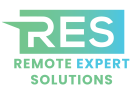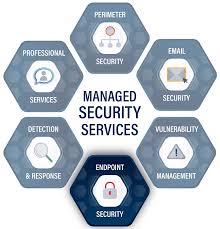In 2025, the convergence of data security & AI is shaping of business in unprecedented ways. Artificial Intelligence now powers everything from predictive customer insights to automated workflows—but this power also comes with new cyber-risk. Businesses of all sizes must understand how AI complicates data protection, and why safeguarding sensitive information must become a core strategic priority.
This article explores the evolving landscape of data security & AI in 2025—detailing both opportunities and threats—while offering practical best practices and technologies that modern businesses need to adopt.
Why Data Security & AI in 2025 Demands Attention
AI systems need massive amounts of data to learn and perform. That data often includes sensitive customer information, financial records, or proprietary business intelligence. In return, AI helps companies:
- Automate decisions
- Enhance customer personalization
- Detect fraud in real time
- Drive market insights
But as AI becomes more integrated, it increases the attack surface—bringing new vulnerabilities and regulatory compliance challenges. It’s a double-edged sword that businesses must manage carefully.
Top Data Security & AI Challenges in 2025
AI Models Vulnerable to Exploit
AI systems can be deceived using adversarial tactics—small input changes that cause drastic output errors. In fields like healthcare or finance, this could lead to misdiagnosis or false fraud alerts, with serious consequences.
Explosion of Data Collection & Storage
AI’s hunger for data means businesses are collecting far more than before. With data opportunity comes risk: poorly secured data stores become prime attack targets, and regulatory requirements around privacy grow heavier.
Shadow AI Usage Hazards
Employees increasingly use third-party AI tools—chatbots, code generators, deepfake creators—outside official IT oversight. This “shadow AI” bypasses security safeguards and potentially exposes internal or customer data.
AI-Powered Cyberattacks
Cybercriminals use AI too, creating customized phishing messages, synthesizing deepfake voices, or bypassing authentication by mimicking user behavior. Traditional defenses are no longer sufficient.
Key Data Security & AI Trends in 2025
Behavioral Threat Detection
Rather than relying solely on signatures, modern security platforms use AI to monitor user patterns. When behavior deviates from normal, the system flags suspicious activity—significantly reducing response times.
Zero Trust Architecture
In the data security & AI 2025 landscape, the mantra is: “Never trust, always verify.” Access requests are authenticated continuously, even for internal systems. AI helps automate attribute-based and contextual access controls.
Federated Learning for Privacy
Federated learning trains AI models directly on user devices rather than centralized servers. This keeps raw data local—minimizing exposure—while still delivering collaborative machine learning outcomes.
Encryption‑First Systems
Secure-by-design is essential. Businesses now encrypt data both at-rest and in-transit. Advanced options like homomorphic encryption even allow computation on encrypted data without exposing it.
Explainable AI (XAI)
Explainable AI makes AI decisions transparent and auditable. When a fraud alert is triggered, you can see “why” it happened. That’s invaluable for regulatory compliance, internal audits, and customer trust.
Navigating the Regulatory Landscape in 2025
- GDPR (EU), CCPA/CPRA (California, USA), PIPEDA (Canada), AI Act (EU)—all enforce strict data handling, transparency, and user control.
- Non-compliance can result in severe fines, legal action, and customer distrust.
- Business leaders must implement policies for explainability, consent management, and data minimization.
Best Practices for Securing AI-Enhanced Systems
Reinforce Data Governance
Map how data flows—from collection and storage, to deletion. Define data roles, maintain audit logs, and ensure regulatory compliance across global jurisdictions.
Conduct Rigorous Data Security & AI Risk Assessments
Before deploying any AI model, evaluate potential security flaws, explainability concerns, or bias. Build controls into your development process to address these risks proactively.
Sanitize Data Security & AI
Remove PII, check data sources for compliance, and eliminate biased or irrelevant data. Reliable AI starts with clean, ethical datasets.
Enforce Strong Access Controls
Use IAM tools to limit data access. Combine password management with multifactor authentication and role-based privileges to reduce exposure.
Deploy Continuous Monitoring
AI models shift over time, and so do threats. Monitor performance, updates, and enforce patches. Incorporate threat intelligence to keep your system current.
How SMBs Can Keep Up Without Breaking the Bank
AI-powered security tools and cloud platforms now offer SMB-specific packages that are:
- Affordable
- Easy to deploy
- Scalable
These tools provide real-time threat detection, secure data flows, automated encryption, and endpoint protection—all on a pay-as-you-grow model.
The Human Factor: Employees Must Be Trained
Even the best AI defense fails if employees aren’t prepared. In 2025, cybersecurity training must include:
- Recognizing AI-generated phishing
- Policies on third-party AI tools
- Drills for AI-related incidents
- Regular awareness updates
A security-first culture supported by ongoing education is just as vital as the latest tech stack.
Looking Ahead: Embedding Trust in data security & AI
Businesses that succeed will combine innovation with responsibility. AI must be rooted in frameworks that ensure data privacy, system transparency, and ethical use—building both capabilities and customer confidence.
FAQs – Data Security & AI in 2025
Q1: Is AI more of a threat or an advantage for data security & AI ?
AI is both a powerful protector and potential risk. With strong governance, it enhances security—but careless use leaves businesses vulnerable.
Q2: What technology combines data security & Artificial inteligence protection in 2025?
Behavior-based threat detection, zero trust models, federated learning, and encryption-first systems are key.
Q3: How can small businesses afford AI-level security?
Cloud-based, AI-enabled security platforms are now made for SMBs—affordable, scalable, and easy to use.
Q4: Which data privacy laws should I care about?
GDPR, CCPA/CPRA, and the EU AI Act are central in 2025. Regional rules like PIPEDA also matter for global operations.
Q5: What’s federated learning’s role in data security & AI ?
Federated learning processes data locally, training AI without moving raw data—dramatically improving user privacy.
Final Thoughts on Data Security & AI in 2025
The era of data security & AI in 2025 is here—and it requires businesses to mature quickly. By integrating transparent AI, encryption-first systems, zero trust policies, and staff training, you can harness AI’s power safely.
At Remote Expert Solutions, we help businesses implement secure, compliant, and intelligent AI systems. Don’t wait for a breach—secure your future by aligning AI innovation with data protection now.






